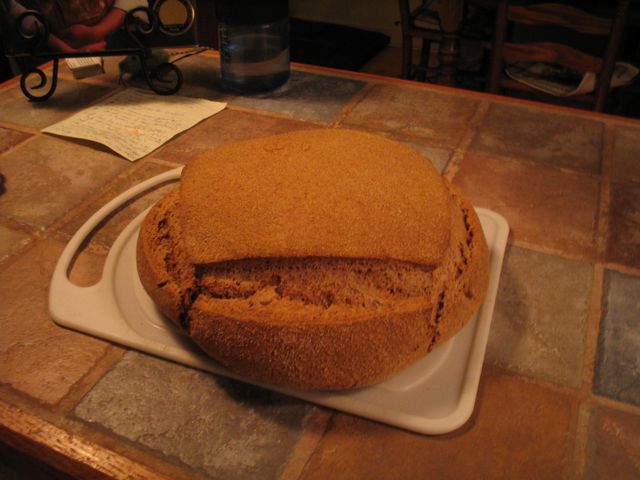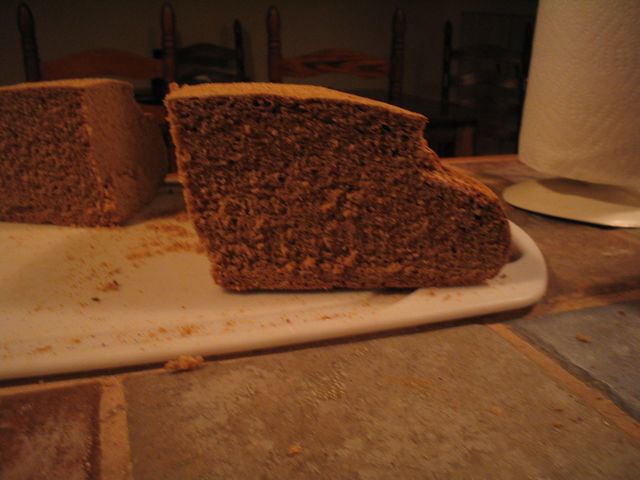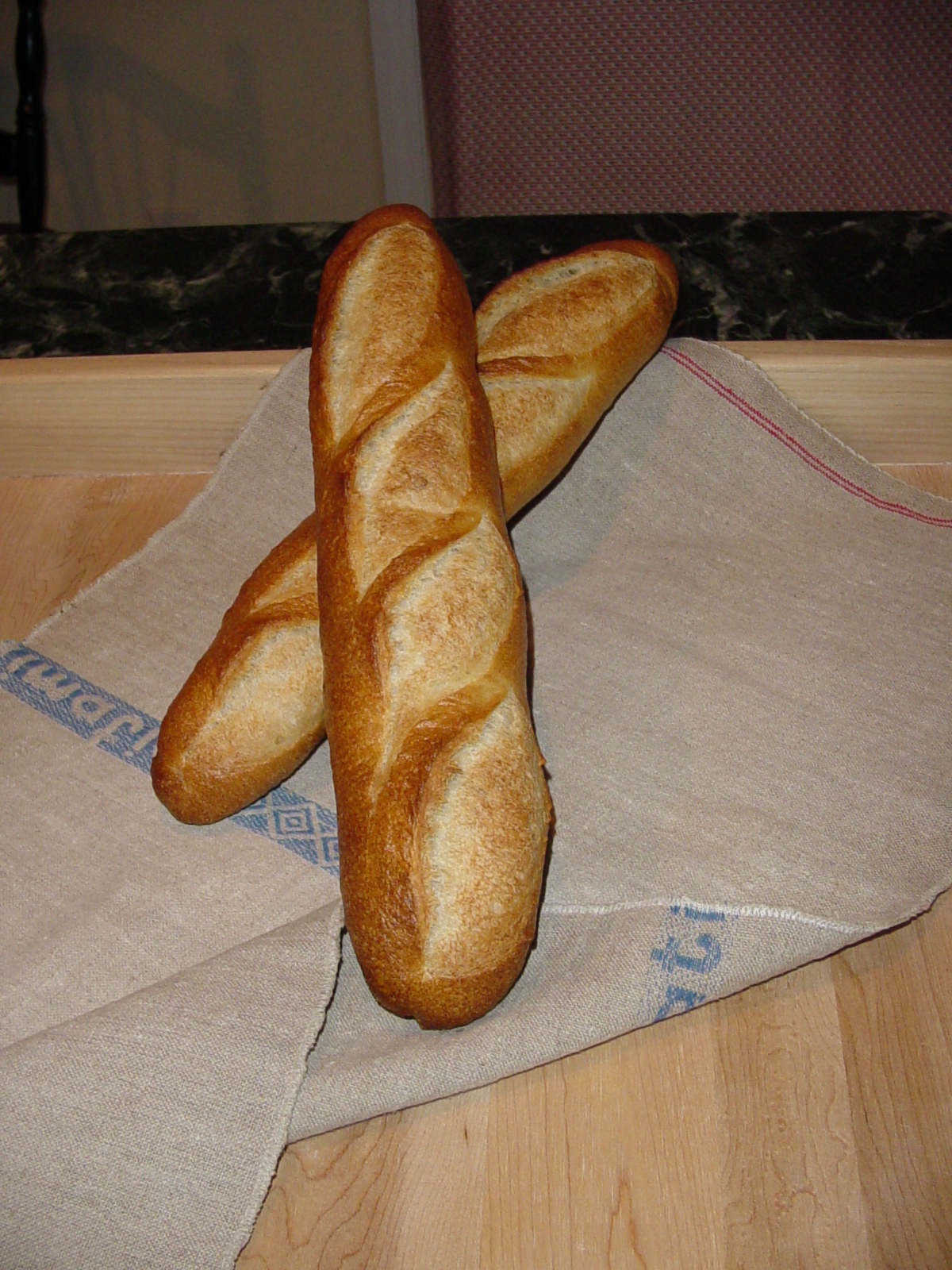I was up for a challenge recently, so I decided to try the Poilane-Style Miche from Peter Reinhart's "Bread Baker's Apprentice." It's a 10 cup wheat, 100% wild yeast loaf. It is also the cover picture of the book. What a loaf of bread!
I ended up doing a variation on the recipe. After 6 days of working on it, the final loaf turned out much better than I could have hoped.

As you can see, it rose much more than I expected. I had made a deep cut in a pound-sign pattern, and the crust still broke at the edges from rising. I have taken to using the "hearth-baking" steam technique outlined in Reinhart's book. So the crust was thick and had two discernable layers on the pallate: The outside was crispy, while the inside part of the crust was chewey (also a feature of sour-dough, as I understand it).
The crumb was somewhat irregular, but didn't have the big holes. I don't think I could have expected it though given the style of loaf. It was chewy, cake-like, and moist.

The taste was really tangy, because I purposefully increased the percentage of starter. I was concerned about it rising enough. Although, next time, I think instead of doubling it, I'll only do 1.5 x's as much starter because it was a bit too tangy. Here is my short version of the variation I followed:
Seed culture:
- One cup of rye to make seed culture
- next day (or when ready) add another cup of rye (1/2 cup water)
- Remove one cup of 2 cup mix and add another cup of rye
- Repeat step 3 on the fourth day
Barm:
- Take 2 cups of rye starter and add: 2.5 cups white and 2 cups water.
- Refrigerate overnight. Ready next day.
Firm Starter:
- One-half of Barm (which amounts to 2 cups or more) + 2 cups wheat + 1/2 cup water
- Set it out and let rise. Then refrigerate overnight.
Dough:
- Add all of starter + 6 or more cups of wheat + 3 and 1/4 tsp salt + 2 and 3/4 cups - 3 cups of water. (My final loaf was an 8 cup total mix. I followed the recipe, but it wasn't enough water for 10 cups. So I've adjusted this variation to have more water and thus more flour.)
- I proofed it in a large mixing bowl with a towel lining. It worked great.
- Two rises at 70 degrees F (it's about winter here) until it doubles.
- Punch back very gently. I just lifted the dough out of the bowl and flipped it upside down to punch back. Reinhart seems to think with these style loaves, it is best not to completely de-gas it. It worked for me.
So there you go. A great tasting loaf with nothing but flour, salt, and water. Praise God! Enjoy with a cup of Irish Breakfast tea and a steaming bowl of oatmeal.






 Crumb
Crumb Whole Wheat Rolls
Whole Wheat Rolls Whole Wheat Rolls
Whole Wheat Rolls
